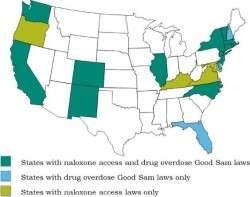
Good Samaritan Laws encourage bystanders to become “Good Samaritans” by summoning emergency responders without fear of arrest or other negative legal consequences.
When my son Gabriel overdosed the first time in 2010, his friends left him on the sidewalk to die. Gabriel was found by a lady who alerted emergency responders, was taken to a local hospital in a coma, under the name “John Doe,” a name often given to patients who are unidentified.
Eight hours later my family received a phone call from a friend stating they had heard Gabriel had overdosed and was at the hospital. Unsure of what to expect, I braced myself for the worst. After being told he would not survive or be brain dead, he awakened and was discharged stumbling out of the emergency room. I had asked the physician to admit him and help us find him help. The doctors response: “We only admit for an overdose of Xanax or alcohol.” Even though he had been on the brink of death, this was not sufficient for an admission or treatment help. When asking the medical personnel for guidance for assistance, their response was to take him to a detox center down the road.
In regards to being left on the sidewalk to die, his friends had bolted out of fear of being arrested and jailed.
On April 8, 2013, Gabriel overdosed again, this time in a sober living house. The scenario was different, his friend did not run, but called 911. He stayed with Gabriel and performed rescue breathing and CPR until emergency responders arrived. Gabriel passed away four days later. If Naloxone would have been accessible, maybe the outcome would have been different, maybe Gabriel would not have died, but been able to access a more structured inpatient recovery treatment and rehab. Because of his death, my position is very strong as a proponent for third party Naloxone Laws. Every single treatment center, recovery house, sober house, transitional house should be required to have this life saving drug on hand. I like how Dr Jeremy Engle from northern KY illustrates advocating for Naloxone Laws: If a person jumps into a body of water and is drowning, I will jump in to save him. Even if he jumps in again, I will save him every time (paraphrase mine).
Because of losing my son, my goal has been to advocate for Good Samaritan and Naloxone Laws in KY. Hoping when someone is around a person who overdoses that they would not run but call 911, and have accessibility to the reversal drug, Naloxone. Heroin has claimed the lives of 722 people this past year in KY.
And now that the 2015 KY legislative session has ended, and a new heroin bill has been signed into legislation. With the new bill comes the controversial needle exchange allowing health departments to exchange out dirty needles from addicts and giving them clean ones. Other provisions include access to treatment, pharmacies prescribing Naloxone, and a Good Samaritan “No Charge” provision to those who call for medical help when someone overdoses.
To save the most lives from Kentucky’s overdose epidemic, the No Charge Good Samaritan measure is a critical component.

More information about Naloxone and overdose Good Samaritan Laws
Because of what happened to my son, I will support Naloxone Access and Good Samaritan Laws knowing someones loved one may be saved because naloxone was accessible and administered and because someone didn’t run but called 911. 

 It is a prescription medicine that reverses an opioid overdose. It cannot be used to get high and is not addictive.
It is a prescription medicine that reverses an opioid overdose. It cannot be used to get high and is not addictive. treatment only after they have become arrested for a crime while under the influence of a substance. Drugs and crime often go hand in hand because people who are substance abuse impaired are forced by their disease to resort to any means necessary to procure their drug. Court-ordered treatment can be effective regardless of who initiates it.
treatment only after they have become arrested for a crime while under the influence of a substance. Drugs and crime often go hand in hand because people who are substance abuse impaired are forced by their disease to resort to any means necessary to procure their drug. Court-ordered treatment can be effective regardless of who initiates it.